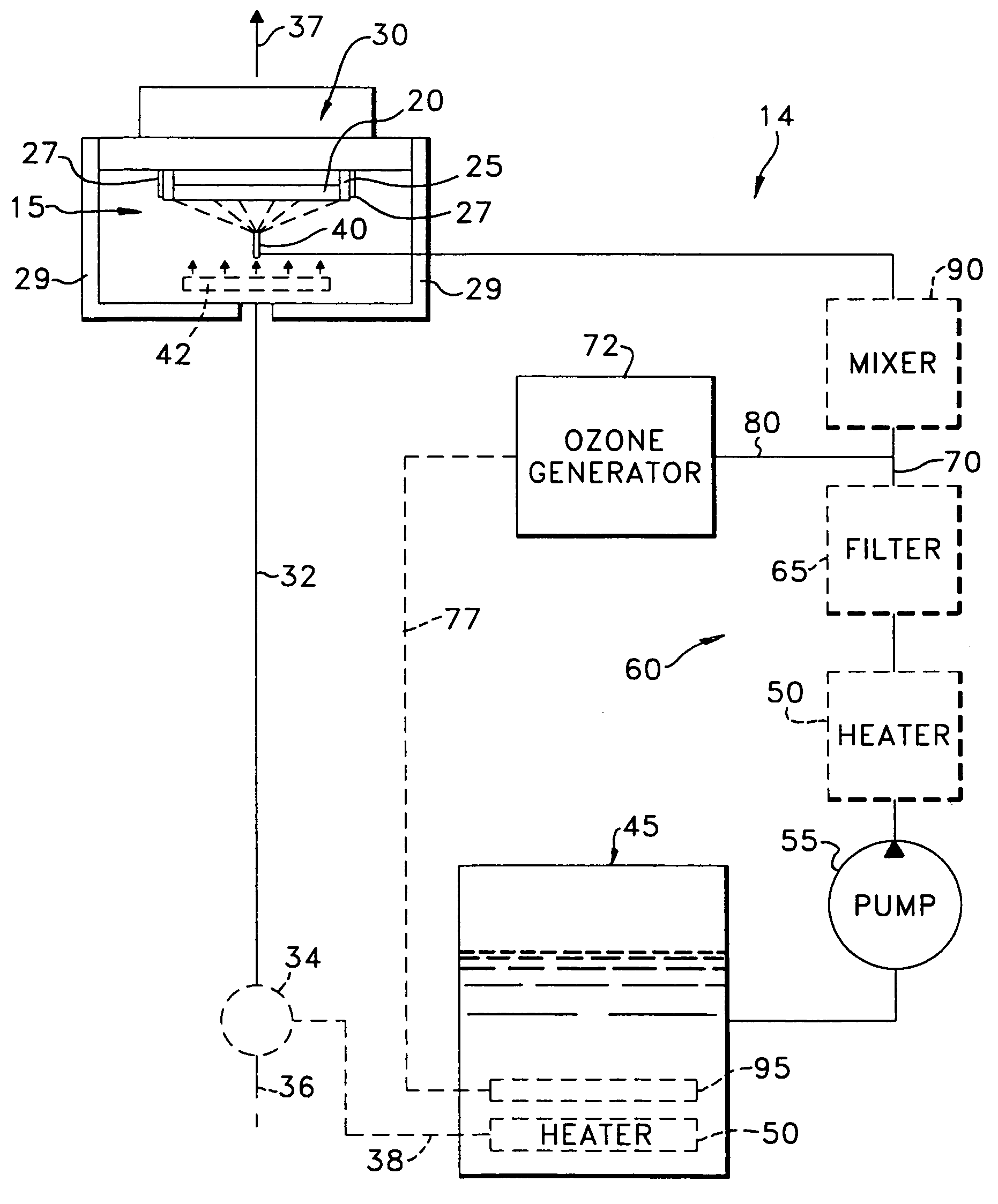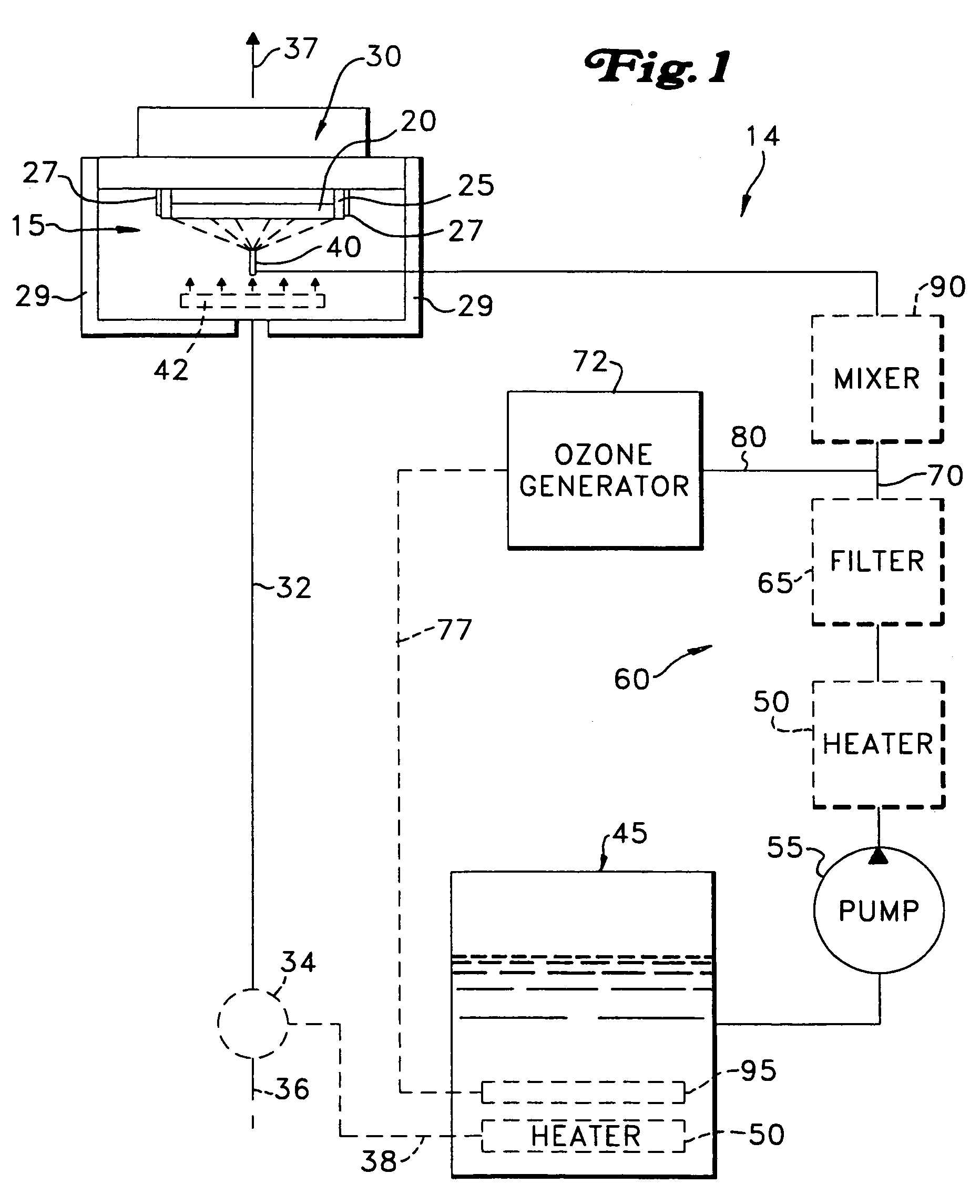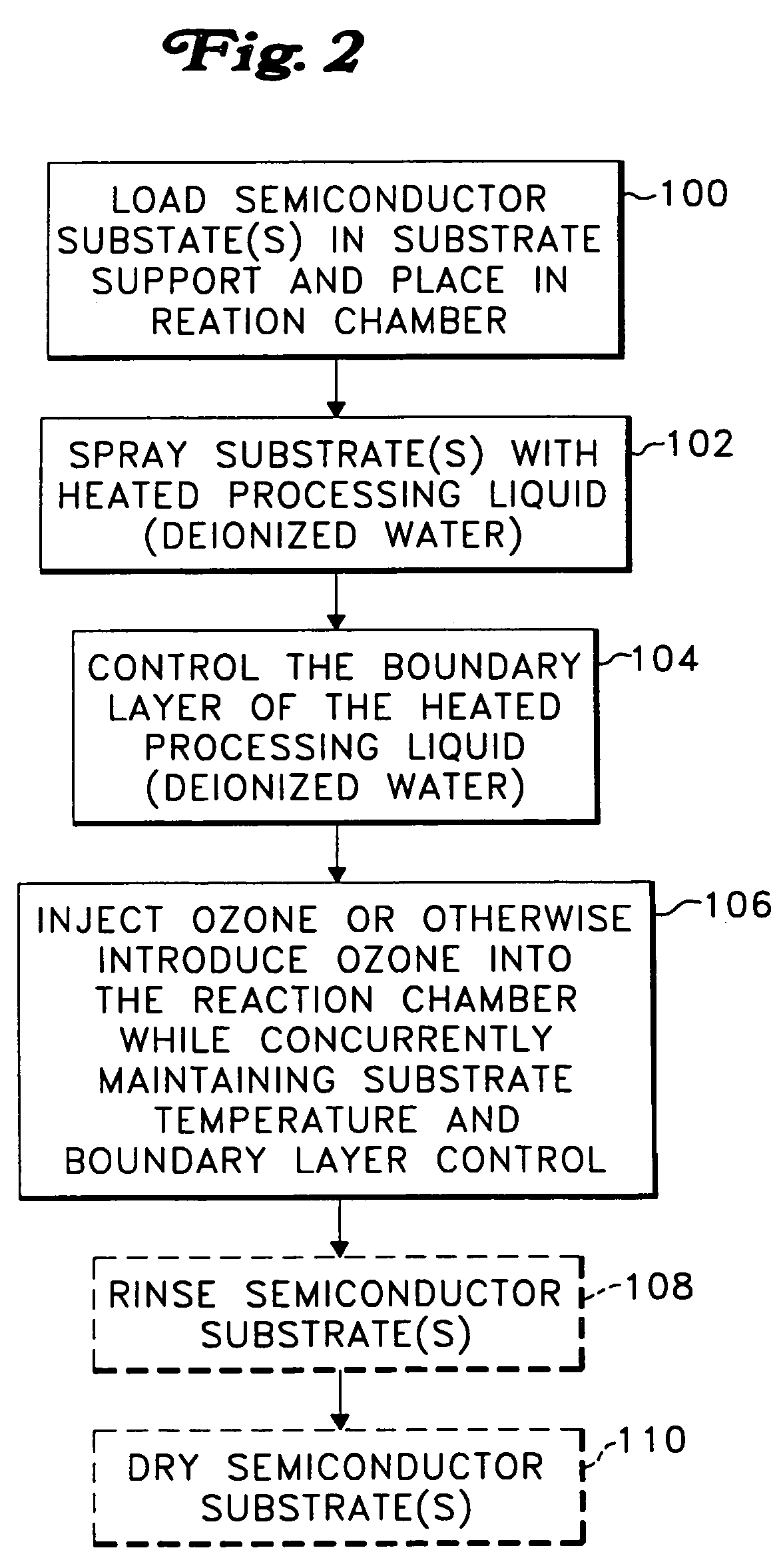Process and apparatus for treating a workpiece with gases
a technology for treating workpieces and workpieces, applied in the direction of sustainable manufacturing/processing, cleaning using liquids, final product manufacturing, etc., can solve the problems of high cost of process chemicals, so as to reduce the required process time, increase the amount of gas available, and increase the reaction rate
- Summary
- Abstract
- Description
- Claims
- Application Information
AI Technical Summary
Benefits of technology
Problems solved by technology
Method used
Image
Examples
Embodiment Construction
[0034]A workpiece is defined here to include any object formed from a substrate upon which microelectronic circuits or components, data storage elements or layers, and / or micro-mechanical or micro-electromechanical elements are or can be formed. The apparatus and methods described here may be used to clean or process workpieces such as semiconductor wafers, silicon wafers, as well as other workpieces such as flat panel displays, hard disk media, CD glass, memory media, MEMs devices, etc., all collectively referred to here as a workpiece.
[0035]Although the systems in FIGS. 1-6 are generally illustrated as single wafer systems, these systems and methods may also be used on a batch processing of workpieces, for example as shown in FIGS. 14 and 15. Turning now to FIG. 1, in a processing or cleaning system 14, a workpiece 20 is preferably supported within a process chamber 15 by a workpiece holder, for example, a rotor assembly 30 having multiple supports 25. The rotor assembly 30 in FIG...
PUM
| Property | Measurement | Unit |
|---|---|---|
| temperature | aaaaa | aaaaa |
| volume | aaaaa | aaaaa |
| thickness | aaaaa | aaaaa |
Abstract
Description
Claims
Application Information
 Login to View More
Login to View More - R&D
- Intellectual Property
- Life Sciences
- Materials
- Tech Scout
- Unparalleled Data Quality
- Higher Quality Content
- 60% Fewer Hallucinations
Browse by: Latest US Patents, China's latest patents, Technical Efficacy Thesaurus, Application Domain, Technology Topic, Popular Technical Reports.
© 2025 PatSnap. All rights reserved.Legal|Privacy policy|Modern Slavery Act Transparency Statement|Sitemap|About US| Contact US: help@patsnap.com



